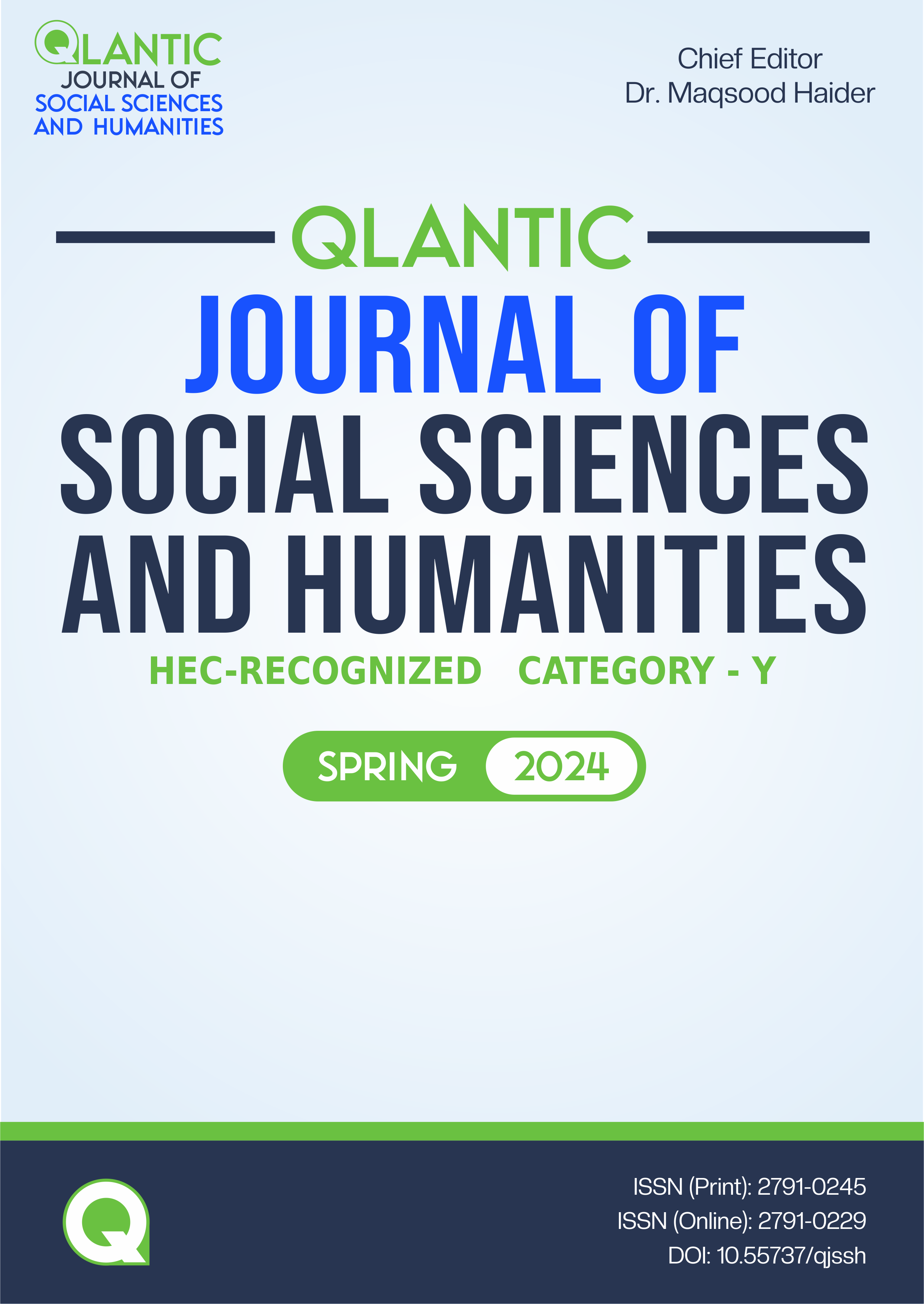A Critical Race Analysis of Resilience and Resistance in Domingo’s Breaking The Maafa Chain
DOI:
https://doi.org/10.55737/qjssh.707535372Keywords:
Double Consciousness, Identity Crisis, Inequality, Marginalization of Minorities, Racial Micro-aggressions, ViolenceAbstract
This study examines the experiences of black African Americans within a white-dominated society while focusing on double consciousness, racial micro-aggressions, the historical implications of the slave trade, and systemic suppression. The primary aim of this study is to highlight the harsh realities of enslavement and the enduring struggle to preserve African heritage. Racism, a socially constructed phenomenon, subjects black individuals to frequent racial discrimination. This research aims to raise awareness and challenge the facade of superiority maintained by the white-dominated society. The selected novel explores the various forms of racial discrimination against African Americans, shedding light on the subtle attacks they face while striving to preserve their identity. Additionally, the study investigates the issues of identity and freedom by analyzing the relationship between the two sisters in the novel under disquisition. Through the lens of Critical Race Theory, this research analyzes the portrayal of black lives and their resilience against white supremacy through Domingo’s novel Breaking The Maafa Chain, a piercing and sensitive representation of suppressed or marginalized Afro-Americans. Critical Race Theory serves as a framework to address the issues of racial discrimination. The research methodology employed in this study is purely qualitative, analytical, and descriptive, and it involves a close textual analysis of the novel within the domain of critical race theory.
References
Bell, D. (1980). “Brown and the interest convergence dilemma.” In Shades of Brown: New Perspectives on School Desegregation, edited by D. Bell. New York: Teachers college press.
Boukerrou, L. & Halimi, M. S. (2021). Double Consciousness in African American literature Breaking the Maafa Chain, book reviews https://www.waterstones.com/book/breaking-the-maafa-chain/anni%20domingo%20/9781913090784
Crenshaw, K. W., & Race, R. (1988). Retrenchment: Transformation and Legitimation in Antidiscrimination Law, 101 Harv. L. rev, 1331, 1332.
Delgado, R., & Stefancic, J. (2017). Critical race theory. New York university press.
Delgado, R. (1990). When a story is just a story: Does voice really matter? Virginia Law Review, 76(1), 95-111. https://doi.org/10.2307/1073104
Du Bois, W. E. B. (1965). Black reconstruction in America. New York: Russell & Russell.
Fanon, F. (1967). Black skin, white mask. London: Pluto Press.
Gates, H. L. J. (2009). Abraham Lincoln on race and slavery. New Jersey: Princeton University press.
Haryanti, R. H., Kuncara, S. D., & Valiantien, N. M. (2019). DISCRIMINATION TOWARDS AFRICAN-AMERICAN WOMEN AS PORTRAYED IN HIDDEN FIGURES FILM. Ilmu Budaya: Jurnal Bahasa, Sastra, Seni Dan Budaya, 3(4), 420–429. https://doi.org/10.30872/jbssb.v3i4.2259
Jacob, N. A. (2017). Visibility of Racism in Ralph Ellison’s Invisible Man. Language in India, 17(5), 213-221. http://www.languageinindia.com/may2017/nidhiyainvisibleellison.pdf
Johnson, H. T. (1899). The Black man’s burden: Voice of missions. Urbana; University of Illinois Press.
Lynn, M., & Parker, L. (2006). Critical race studies in education: Examining a Decade of Research on U.S. Schools. Urban reviews.
Magubane, Z. (2003). “Call me America”: The construction of race, identity, and history in Henry Louis gates Jr.'s wonders of the African world. Cultural Studies & Critical Methodologies, 3(3), 247-270. https://doi.org/10.1177/1532708603254351
Morrison, T. (2017). The Hate you give. United States: Alferd A. Knopf.
Museus, S. D. (2013). Asian American students in higher education. New York, NY: Routledge.
Quiros, L. (2009). The social construction of racial and ethnic identity among women of color from mixed ancestry: Psychological freedoms and sociological constraints.
Taylor, E. (1998). A primer on critical race theory. The Journal of Blacks in Higher Education, (19), 122. https://doi.org/10.2307/2998940
Published
Issue
Section
License
Copyright (c) 2024 Mahnoor Fatima, Rana Abdul Munim Khan, Qasim Shafiq

This work is licensed under a Creative Commons Attribution-NonCommercial 4.0 International License.





